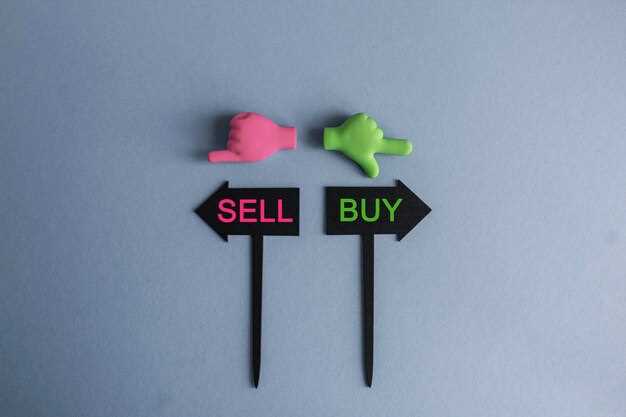
In an era where consumer goods rapidly evolve, making decisions about selling your used items can be challenging. The dilemma often boils down to two main options: a trade-in or a direct sale. While both avenues offer distinct benefits, understanding which path proves more profitable requires a closer examination of the variables involved.
Trade-ins can be particularly appealing due to their convenience and immediate satisfaction. Retailers often provide instant credit towards a newer model, which can streamline the purchasing process. However, the valuation of your vintage items during a trade-in can sometimes lead to disappointingly low offers, as businesses typically factor in profit margins and resale potential.
On the other hand, a direct sale often allows for greater profit margins, especially for vintage items that hold sentimental or collectible value. Platforms like online marketplaces can connect you with buyers who appreciate the uniqueness of what you are selling, potentially allowing you to negotiate a better price. However, this route requires more effort in terms of marketing and managing transactions, posing its own set of challenges.
Ultimately, the decision between trade-in and direct sale hinges on your priorities, whether they lean towards convenience or profitability. Understanding the nuances of both options will enable you to make an informed decision tailored to your specific circumstances.
Trade-In or Direct Sale: Which Option is More Profitable?
When it comes to selling vintage items, two prominent options arise: trade-in and direct sale. Each method has its advantages and potential drawbacks, making the choice dependent on individual circumstances and goals. This section explores both avenues to determine which option might yield higher profits.
Trade-In Benefits

- Convenience: Trade-ins offer a straightforward process by allowing sellers to exchange their vintage items directly for credit towards a new purchase, saving time and effort.
- Immediate Valuation: When trading in, items are often appraised on the spot, providing a quick way to gauge their worth without extensive research.
- Reduced Hassle: Sellers avoid the complications of listing, negotiating, and shipping, thus simplifying the transaction.
Drawbacks of Trade-In
- Lower Value: Typically, trade-in valuations are lower than what sellers might receive through direct sales, as businesses factor in their profit margins.
- Limited Options: Trade-ins are usually tied to specific retailers, which may limit choices regarding where to trade.
Direct Sale Advantages
- Potential for Higher Profits: Selling vintage items directly–whether online, at auctions, or through consignment–can often yield higher returns compared to trade-ins.
- Greater Control: Sellers can set their prices, determine the selling platform, and decide on marketing strategies.
- Diverse Market Reach: Online platforms and social media enable sellers to connect with a broader audience, enhancing the chances of selling at a profitable price.
Challenges of Direct Sale
- Time-Consuming: The process can be lengthy, involving listing items, waiting for buyers, and managing correspondence.
- Market Risk: Vintage items may not sell as quickly as expected, especially if the market demand fluctuates.
- Logistics: Shipping and handling can add to costs, and sellers must also ensure safe packaging to maintain the items’ condition.
Factors Influencing the Decision

- Item Condition: The vintage item’s state can significantly affect both trade-in and direct sale potential.
- Market Demand: Items in high demand likely fare better in direct sales, especially during peak seasons.
- Seller’s Urgency: For those needing quick cash, trade-ins might be the simpler choice despite lower returns.
In conclusion, the decision between trade-in and direct sale largely depends on personal priorities and the nature of the vintage items. While trade-ins provide convenience, direct sales often present greater financial rewards. Selling vintage items successfully requires a clear understanding of the market and an evaluation of one’s time and effort willingness to invest.
Comparing Financial Returns: Trade-In vs Direct Sale for Vintage Items
When considering the financial returns from vintage items, two primary options arise: trade-in and direct sale. Each approach has its distinct advantages and disadvantages that can significantly impact profitability.
A trade-in typically offers convenience, allowing sellers to exchange their vintage items for store credit or other products. This method often results in a quicker transaction process, appealing to those who prioritize immediate value over maximizing revenue. However, trade-in values are usually lower than market prices, reflecting the seller’s desire for quick inventory turnover and potential profit margins.
In contrast, a direct sale can yield higher financial returns but requires more time and effort. Selling vintage items directly–whether through online platforms, auctions, or local markets–allows sellers to set their own prices based on current demand, condition, and rarity. This approach often attracts collectors willing to pay a premium for unique pieces, maximizing the seller’s profits if they can successfully reach the right audience.
Ultimately, the more profitable option depends on the individual’s circumstances and goals. Those who are willing to invest time and energy into marketing their vintage items may find direct sales to offer higher financial returns. Conversely, if convenience and speed are prioritized, trade-ins may be the preferable choice, albeit at a lower profit margin. Evaluating personal priorities and the specific vintage items in question will guide sellers towards the most advantageous decision.
Assessing Market Demand: Identifying the Best Time to Sell Vintage Goods
Understanding market demand is crucial when deciding whether to engage in a trade-in or a direct sale of vintage goods. The timing of your sale can significantly impact profitability. Therefore, assessing market trends and consumer interest is essential.
Research seasonal trends in the vintage market. Certain times of the year, such as the spring and fall months, often see an increase in consumer spending on vintage items due to seasonal events like flea markets and garage sales. Awareness of these peaks can inform your decision on when to sell.
Leverage online tools to track demand for specific vintage items. Websites dedicated to vintage goods can offer insights into pricing and consumer interest. Monitoring online auctions and sales can help you gauge whether demand is rising or falling, allowing you to time your sale more effectively.
Engage with vintage communities on social media platforms or forums. These communities often share valuable insights about current trends and what vintage items are in demand. By participating in discussions, you can determine if it’s the right moment to sell your goods or hold on for a better opportunity.
Consider the uniqueness of your vintage goods. Items that are rare or in high demand may command a higher price during specific trends or events, such as anniversaries of iconic products or pop culture resurgences. Identifying these moments can lead to a more profitable sale.
The option to trade-in can also affect your timing. Some retailers may offer promotions for trade-ins during specific seasons, presenting a great opportunity to maximize value instead of waiting for a direct sale.
In conclusion, a thorough assessment of market demand combined with strategic timing can enhance your profitability when selling vintage goods. Make informed decisions based on research and community engagement to ensure that your trade-in or direct sale yields the best possible return.
Evaluating Risks: Understanding Trade-In Contracts and Direct Sale Transactions
When it comes to selling your vintage items, whether through a trade-in contract or a direct sale transaction, understanding the associated risks is crucial. Each option has its own set of benefits and drawbacks that can significantly impact your overall profit margins.
Trade-In Contracts often appeal to those looking for convenience. By trading in an item, you can directly apply its value toward a new purchase. However, this method poses risks, particularly in valuation. Dealers typically offer lower prices for trade-ins to cover their own costs and profit margins, which can result in a less favorable outcome compared to selling directly.
Another risk is the dependency on the dealer’s pricing structure. It can vary widely based on their current inventory and demand for certain vintage items. If the market experiences fluctuations, the trade-in value you receive may not reflect the item’s true worth.
On the other hand, opting for a Direct Sale Transaction allows for greater control over the selling price. By reaching out to potential buyers through various platforms, including online marketplaces or vintage fairs, sellers often achieve better prices. However, this option carries its own risks, particularly regarding the time and effort required to find suitable buyers.
Additionally, sellers must be cautious of scams or fraudulent buyers when pursuing direct sales. Ensuring secure payment methods and proper transaction channels becomes essential to avoid potential losses. The time investment can also be significant when negotiating with multiple parties or waiting for the right buyer.
In conclusion, both trade-in contracts and direct sale transactions present unique risks. Evaluating these risks in relation to your vintage item’s value and your willingness to invest time can help you make a more informed decision that aligns with your financial goals.


